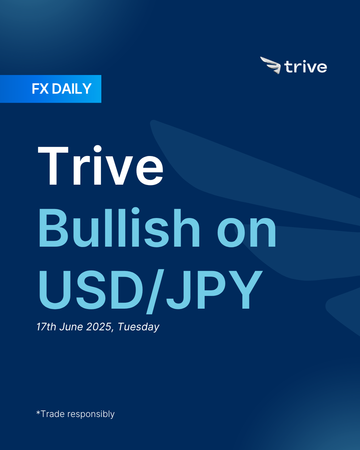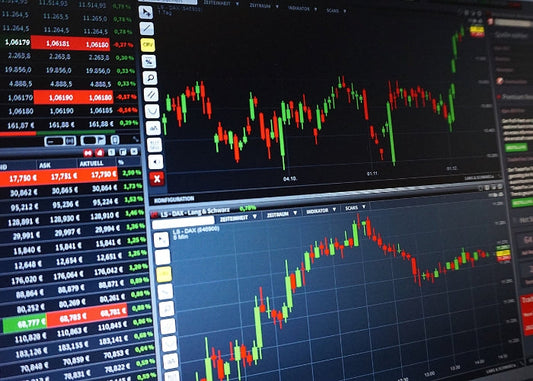FX Daily: Trive Bullish on EUR/USD

EUR/USD holds a bullish bias as soft U.S. data widened rate differentials in favor of the euro. Despite a pullback on geopolitical tensions, the euro remains supported by solid fundamentals and its role as a USD alternative. Unless the conflict escalates, dips in EUR/USD may offer buying opportunities.
USD: Fed up
Despite serious tensions in the Middle East, the oil market has remained surprisingly stable. Even after Israel’s latest attack on Iran, oil production hasn’t been disrupted, tankers are still loading, and supply continues to exceed demand. This oversupply has been building for months, with global inventories rising above normal levels and demand growth slowing. While prices briefly spiked, they quickly fell again as traders saw the rally as a chance to sell. The risk of a real supply shock still exists, but for now, the fundamentals point to a well-supplied market, and that may keep oil prices from surging.
The most likely outcome is that tensions stay contained, with no direct attack on the U.S. In that case, market reactions may remain limited. A second, more serious scenario would involve Iran retaliating against the U.S. but doing so carefully, for example, issuing warnings to avoid casualties. This would raise risks but still stop short of triggering a major escalation. The worst-case scenario involves Iran striking U.S. military positions or trying to close the Strait of Hormuz, a key route for global oil shipments. That could force the U.S. into a broader regional conflict alongside Israel. In such a case, the USD and oil prices could surge sharply, possibly reaching $130 a barrel.
The dollar’s limited bounce after Israel’s strikes on Iran shows that it’s no longer the automatic safe haven it once was. While the greenback did edge higher, it quickly gave back most of its gains, a contrast to how it used to behave during international crises. Broader concerns about U.S. trade policy, economic growth, and rising debt have weakened overall confidence. Some analysts suggest that unless tensions in the Middle East escalate significantly, any further dollar strength may be short-lived. Still, with the U.S. being the world’s largest oil producer and the dollar recently hitting multi-year lows, the bounce may have been driven more by positioning and short-covering than by genuine safe-haven demand, and that could give it short-term momentum.
Thus, the baseline bias is weak bullish for the dollar, unless the risk sentiment somehow reverses to risk on or the FOMC delivers a very dovish meeting - but due to the Iran-Israel conflict the FOMC could be overshadowed. As a reminder, Although recent events have given the U.S. dollar a modest boost, Friday’s attack demonstrated that investors currently favor the Swiss franc and the Japanese yen over the dollar. Over the long term, however, it remain bearish on the dollar. The present conflict may strengthen the dollar in the short term, but absent further escalation, such as U.S. involvement or attacks on American bases, will expect any rally to be temporary. In that scenario, look for opportunities to sell the USD when it becomes overbought. Do so cautiously, keeping a close watch on the news and assessing whether tensions are rising or easing and whether a peace agreement is likely.
EUR: A self-defeating strength?
The Euro experienced a dramatic week defined by two distinct halves, first surging to a multi-year high against the U.S. dollar before a violent geopolitical shock erased all gains. The single currency began the week on firm footing, rising above 1.1400 as market attention shifted from the European Central Bank’s recent rate cut to a suddenly softer outlook for U.S. monetary policy. That momentum exploded mid-week after May’s U.S. consumer and producer price indexes came in surprisingly light and U.S. continuing jobless claims climbed to their highest level in the current cycle. These developments prompted traders to aggressively reprice expectations for Federal Reserve rate cuts, widening the interest-rate differential in favor of the Euro and driving EUR/USD past 1.1600 for the first time since October 2021.
As of Sunday, the markets assign an 83% probability to holding rates steady and a 17% probability to a 25‐bps rate cut by the ECB at its July 24th meeting. The interest rate path is more or less the same compared to last week, and the markets are pricing in 47‐bps of rate cuts over the next five meetings.
The Euro has quite a solid position right now, due to being the most liquid alternative to the USD and the euro-zone sizeable current account surplus, and the economic growth and sentiment in the euro area have held up better than many feared.
Taken together and given that the euro isn’t traditionally viewed as a “risk on” currency, we believe it could hold up well over the coming week, especially against the New Zealand and Australian dollars. However, we expect it to underperform genuine safe haven currencies such as the Swiss franc and Japanese yen.
If the conflict between Iran and Israel shows signs of easing or, even better, moves toward a peace agreement, that could open up attractive trading opportunities. With our long term outlook on the US dollar remaining bearish, a sharp drop in EUR/USD into oversold levels would prompt us to go long on the euro, anticipating any flight to safety move to prove short lived. Conversely, should the conflict escalate further and draw in the United States, we would shift our focus to more defensive, risk off plays.
The baseline bias for the week remains broadly neutral, with the dynamics of individual currency pairs unfolding as described above. Domestic releases such as the final CPI on Wednesday and consumer confidence on Friday are likely to be overshadowed by geopolitical developments in Israel and Iran unless the conflict subsides. Even more than usual, it will be crucial to monitor real-time headlines and track the conflict, as any developments could completely change the market outlook.
 EUR/USD 4H
EUR/USD 4H
Disclaimer
This material is provided for informational purposes only and does not constitute financial, investment, or other advice. The opinions expressed in this material are those of the author and do not necessarily reflect the views of Trive International. No opinion contained in this material constitutes a recommendation by Trive International or its author regarding any particular investment, transaction, or investment strategy. This material should not be relied upon in making any investment decision.
The information provided does not consider the individual investment objectives, financial situation, or needs of any specific investor. Investors should seek independent financial advice tailored to their individual circumstances before making any investment decisions. Trive International shall not be liable for any loss, damage, or injury arising directly or indirectly from the use of this information or from any action or decision taken as a result of using this material.
Trive International may or may not have a financial interest in the companies or securities mentioned. The value of investments may fluctuate, and investors may not get back the amount they originally invested. Past performance is not indicative of future results.
For more information about Trive International, please visit http://trive.com/int
Additional Information
Investing involves risk, including the potential loss of principal. Diversification and asset allocation strategies do not ensure a profit or guarantee against loss. The content in this material is subject to change without notice and may become outdated or inaccurate over time. Trive International does not undertake any obligation to update the information in this material.
By accessing this material, you acknowledge and agree to the terms of this disclaimer. If you do not agree with these terms, please refrain from using this information.
No comments
Home
Trive
TriveHub





0 comments